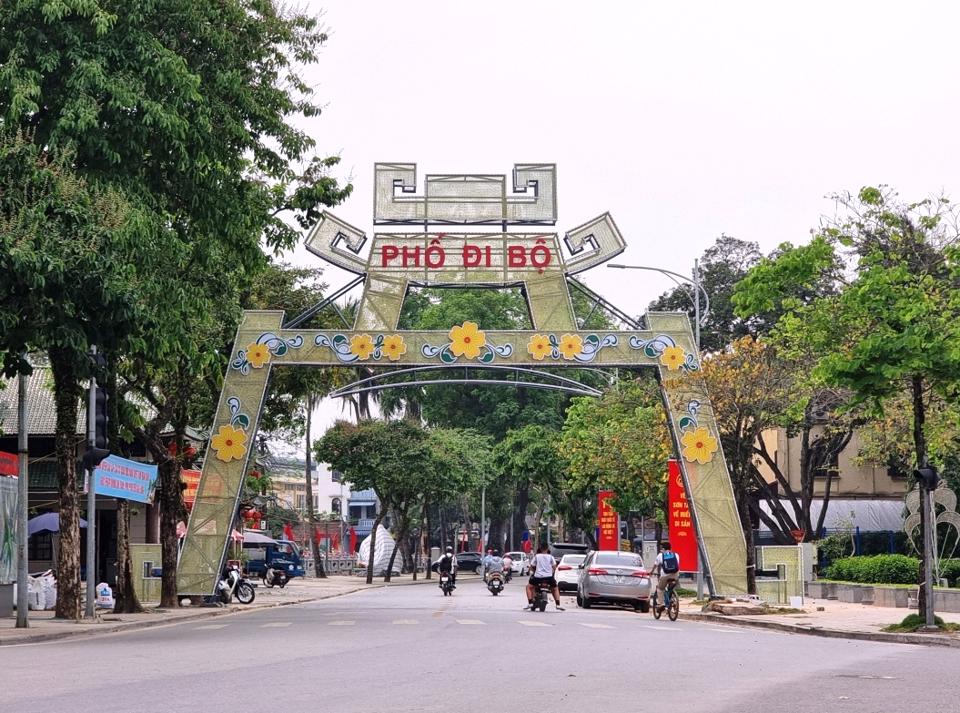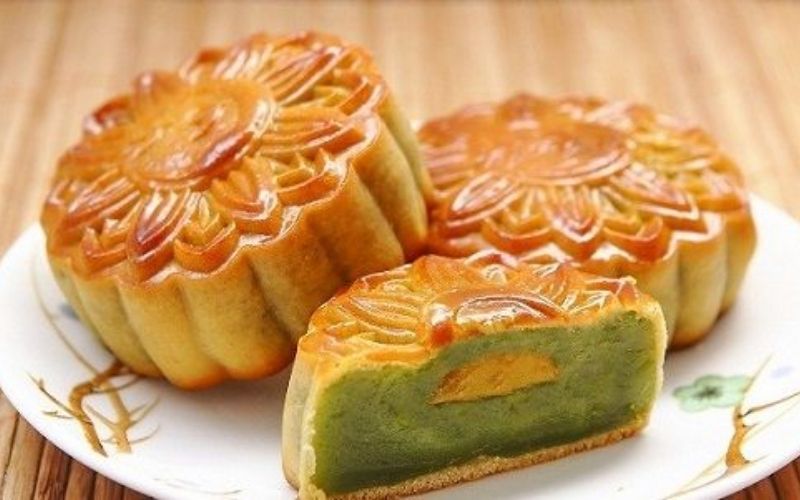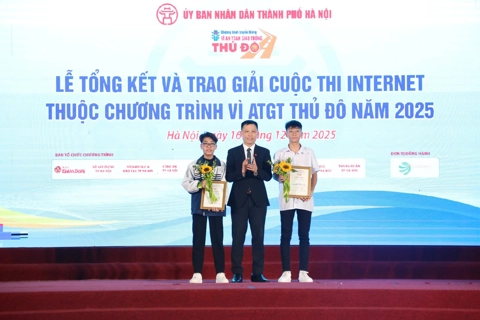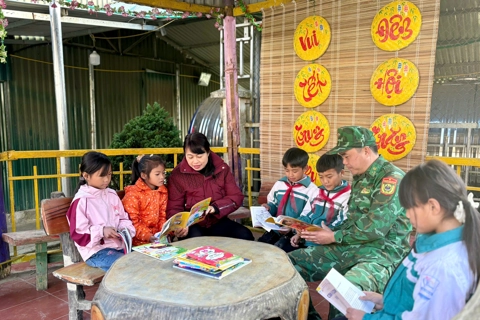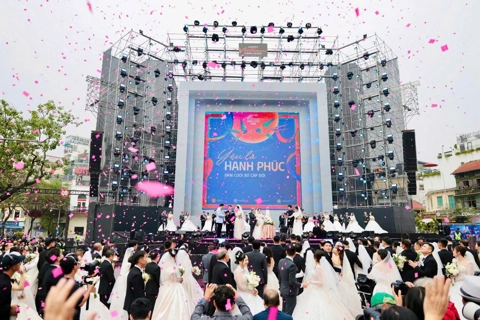Back to childhood with program recreating traditional Mid-Autumn Festival in Hanoi
The program not only aims to offer children a meaningful and memorable Mid-Autumn Festival but also appeals to adults evoking memories of their childhoods.
The traditional Mid-Autumn Festival will be reenacted through a wide range of activities, which will be held at the Pedestrian Zone around the Son Tay Ancient Fortress in Hanoi between September 8 and 10.
According to the management board of the Pedestrian Zone, numerous cultural activities will take place on the days, which coincide with the 13th-15th days of the eighth lunar month, to help preserve and bring into play the cultural values of the Mid-Autumn Festival, a big tradition of Vietnamese people.
A traditional dance festival will be held on September 8 night with the participation of teams from districts across Hanoi. Other activities include a lantern competition on September 9 and a fruit tray arranging contest on September 10, the organizers said.
Many cultural activities and special contests will take place on the occasion of the Mid-Autumn Festival 2022 at the pedestrian zone around the Son Tay Ancient Fortress in Hanoi. Photo: The Hanoi Times |
Besides cultural activities, folk games and traditional crafts, the highlight of the event will be a gala on September 10 night, which features traditional unicorn and dragon dances, and a gift presentation to 30 local disadvantaged children, the organizers stressed.
Moreover, the colorful Full Moon includes a variety of activities such as watching and helping artisans to make traditional lanterns and toys like star lanterns, paper masks, or tò he (colorful figurines made from glutinous rice dough); watching dragon dances, and making moon cakes.
The program not only aims to offer children a meaningful and memorable Mid-Autumn Festival with interesting activities but also appeals to adults evoking memories of their childhoods, the organizers said, adding that the event also helps make the Son Tay Ancient Fortress an attractive cultural space and tourist site for residents in the town and neighboring districts.
The Son Tay Ancient Fortress was a military base built in 1822 under the reign of King Minh Mang (1820-1841) to protect the west of Thang Long Imperial Citadel. It is about 45km to the west of Hanoi and is the most unique ancient military architecture in Vietnam built with laterite.
The walking zone around the fortress is the fourth pedestrian space of Hanoi, after the routes around Hoan Kiem Lake; Hanoi Old Quarter, and Trinh Cong Son Street near West Lake.
The walking street around the Son Tay Ancient Fortress is 820-meter-long, with a total land area of 34,550 square meters.
According to the planning of the capital until 2030, with a vision for 2050, Son Tay Town is one of the five satellite towns of Hanoi whose economy will rely on historical, cultural tourism, ecology, and commercial services.
Mid-Autumn symbols
The Mid-Autumn Festival, also known as the Moon Festival, is usually an occasion for family reunions and a children’s night out. It falls on the Full Moon night (15th) of the eighth month on the lunar calendar, said to see the biggest moon of the year (September 10 this year). These days, the festival is around the corner all over Vietnam.
In an interview with The Hanoi Times, Prof. Dr. Nguyen Thi Phuong Cham from the Faculty of Oriental Studies under the University of Social Sciences and Humanities mentioned the four things regarded as symbols of the Moon Festival.
“The Mid-Autumn Festival is the happiest day for children, during which parents buy their children mooncakes, lanterns, funny paper masks and let them join various activities like lion dance,” Cham said.
Mooncakes
“A mooncake is a traditional pastry. It is a symbol of a family reunion, and enjoying mooncakes is the most common and representative tradition during the Mid-Autumn Festival. Symbolically, the roundness of the mooncake signifies completeness and reunion, particularly in relation to family unity,” Cham said.
Mooncake is an indispensable part of the Mid-Autumn Festival. Photo: Trung Kien/ The Hanoi Times |
She clarified that in Vietnamese culture, roundness symbolizes completeness and togetherness and round mooncakes complement the harvest moon in the night sky at the Mid-Autumn Festival. On this occasion, Vietnamese people enjoy mooncakes together with family and give mooncakes to relatives or friends to express love and best wishes.
“On the night of the full moon, it is time for a family reunion. Vietnamese families will gaze at the moon and appreciate its beauty while enjoying delicious mooncakes and tea,” Cham stressed.
Festive paper masks
Another popular traditional toy during the Mid-Autumn Festival is a paper mask, which not only has a place in the hearts of Vietnamese children but is also a favorite among international and domestic tourists.
"The mask is always an indispensable item of a child’s night out for the Moon festival. In Vietnam, the paper masks are popular for having their own characteristics as they feature familiar characters in Vietnamese folk tales and literature such as Dia, Teu, Bom, Chi Pheo and Thi No, or 12 animals for zodiac signs, lion and unicorn heads. The toys are handcrafted with simple, natural ingredients such as bamboo, paper, and cardboard,” Cham said.
Nowadays, despite the advent of many modern toys, these vivid time-honored masks still remain special in the minds of many children.
Star-shaped lanterns
“Besides the full moon, star-shaped lanterns are important customs of the Mid-Autumn Festival in Vietnam. It is a Vietnamese traditional toy made of bamboo sticks, transparent colored papers, and jutes, with a candle inside to create light,” Cham said.
She added that a star-shaped lantern is much more than just a decorative item, it also symbolizes the five basic elements of metal, wood, water, fire, and earth. According to Eastern philosophy, the five above-mentioned elements represent the balance and harmony of the world.
“The images of star-shaped lanterns and parades of children getting down the street manifest that full moon rituals have firmly embedded in many Vietnamese generations,” Cham emphasized.
Lion dancing
"Lion dancing is considered the most popular symbol in Vietnamese people's Full Moon festival. At night, groups of children parade through the streets, go from door to door, and ask house owners for their permission to perform the lion dancing. If it is agreed then the children will put on a show, which is believed to bring luck and fortune," Cham said.
These lion dances are fascinating, and huge amounts of children, ranging from little kids to teenagers, participate in this activity. An outstanding feature of the Vietnamese lion dancing is the performance of Ong Dia at the front of the parade. "He is the soul of the Earth, described as a grinning, big-bellied man holding a leaf fan resembling the Buddha," Cham added.
“In the Vietnamese's opinion, Ong Dia leads the lion dancing, bestowing blessings and luck to everyone. Wherever the parade takes place, in the minds of Vietnamese people, the lion dancing drives away evil spirits and sorrows. Therefore, everyone can enjoy happiness and prosperity in life,” Cham told The Hanoi Times.

